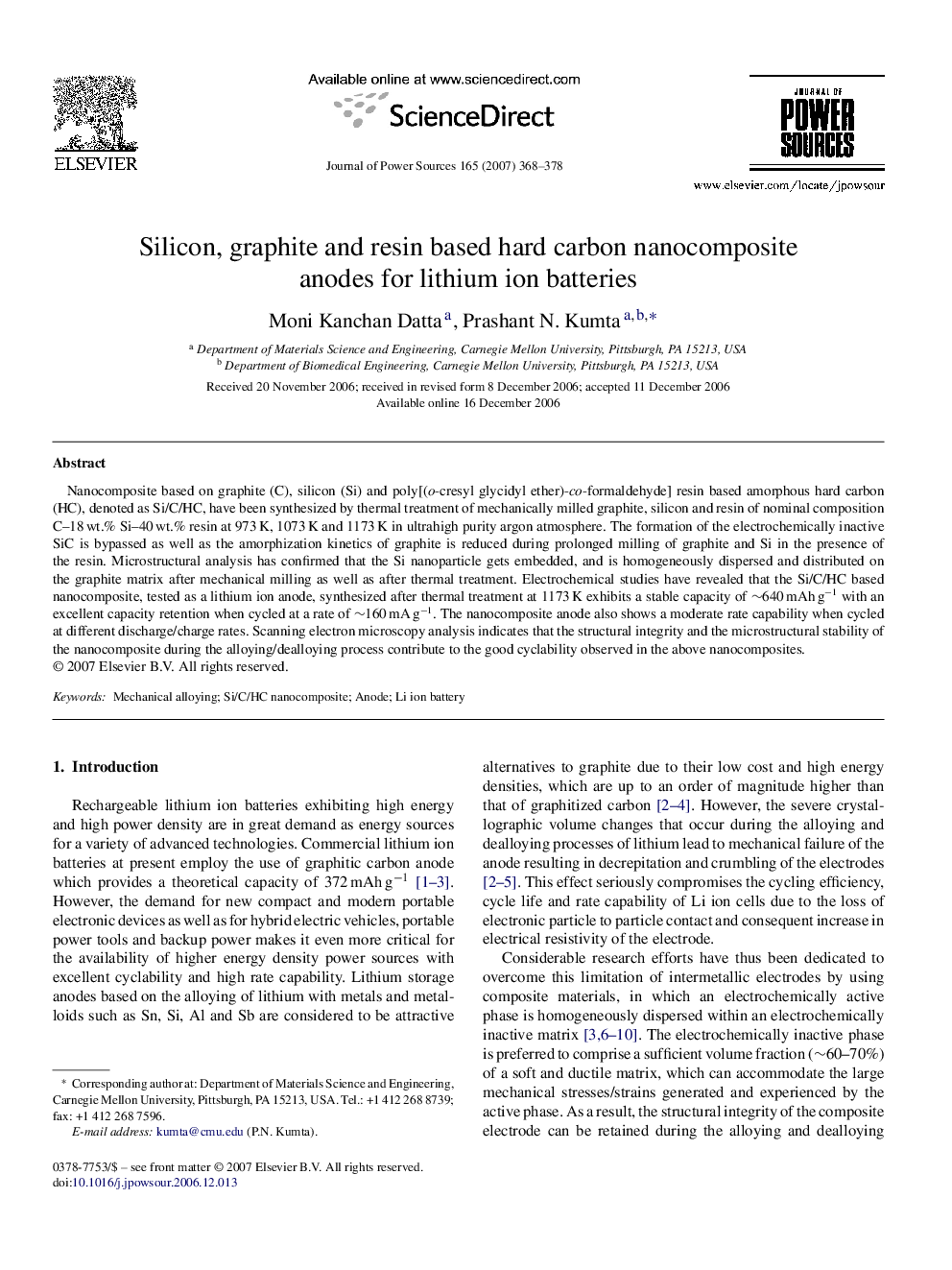| Article ID | Journal | Published Year | Pages | File Type |
|---|---|---|---|---|
| 1291959 | Journal of Power Sources | 2007 | 11 Pages |
Nanocomposite based on graphite (C), silicon (Si) and poly[(o-cresyl glycidyl ether)-co-formaldehyde] resin based amorphous hard carbon (HC), denoted as Si/C/HC, have been synthesized by thermal treatment of mechanically milled graphite, silicon and resin of nominal composition C–18 wt.% Si–40 wt.% resin at 973 K, 1073 K and 1173 K in ultrahigh purity argon atmosphere. The formation of the electrochemically inactive SiC is bypassed as well as the amorphization kinetics of graphite is reduced during prolonged milling of graphite and Si in the presence of the resin. Microstructural analysis has confirmed that the Si nanoparticle gets embedded, and is homogeneously dispersed and distributed on the graphite matrix after mechanical milling as well as after thermal treatment. Electrochemical studies have revealed that the Si/C/HC based nanocomposite, tested as a lithium ion anode, synthesized after thermal treatment at 1173 K exhibits a stable capacity of ∼640 mAh g−1 with an excellent capacity retention when cycled at a rate of ∼160 mA g−1. The nanocomposite anode also shows a moderate rate capability when cycled at different discharge/charge rates. Scanning electron microscopy analysis indicates that the structural integrity and the microstructural stability of the nanocomposite during the alloying/dealloying process contribute to the good cyclability observed in the above nanocomposites.
